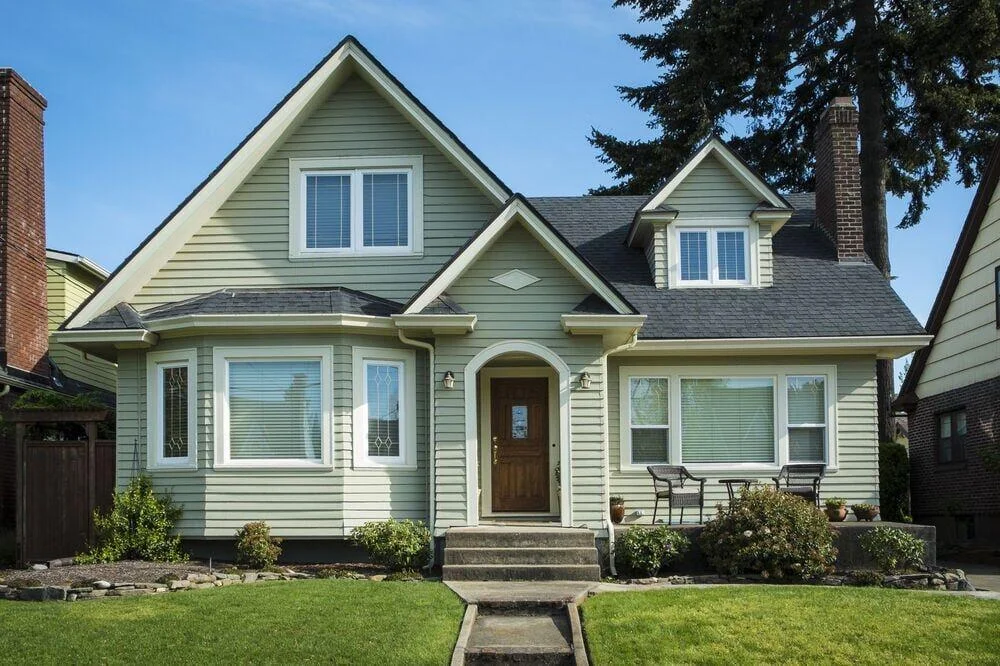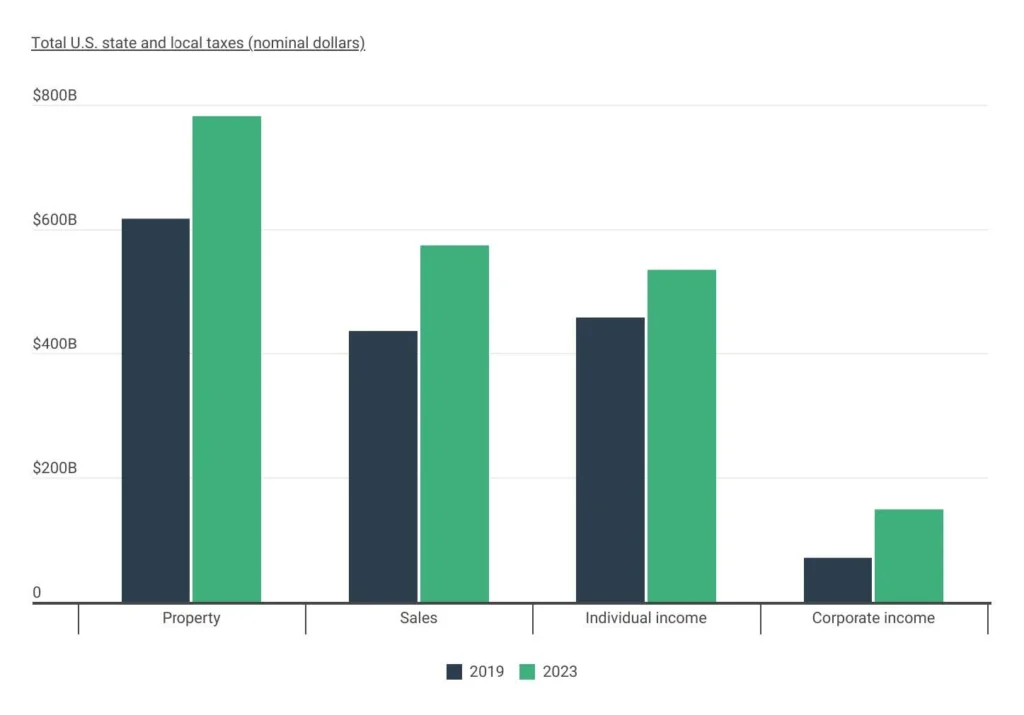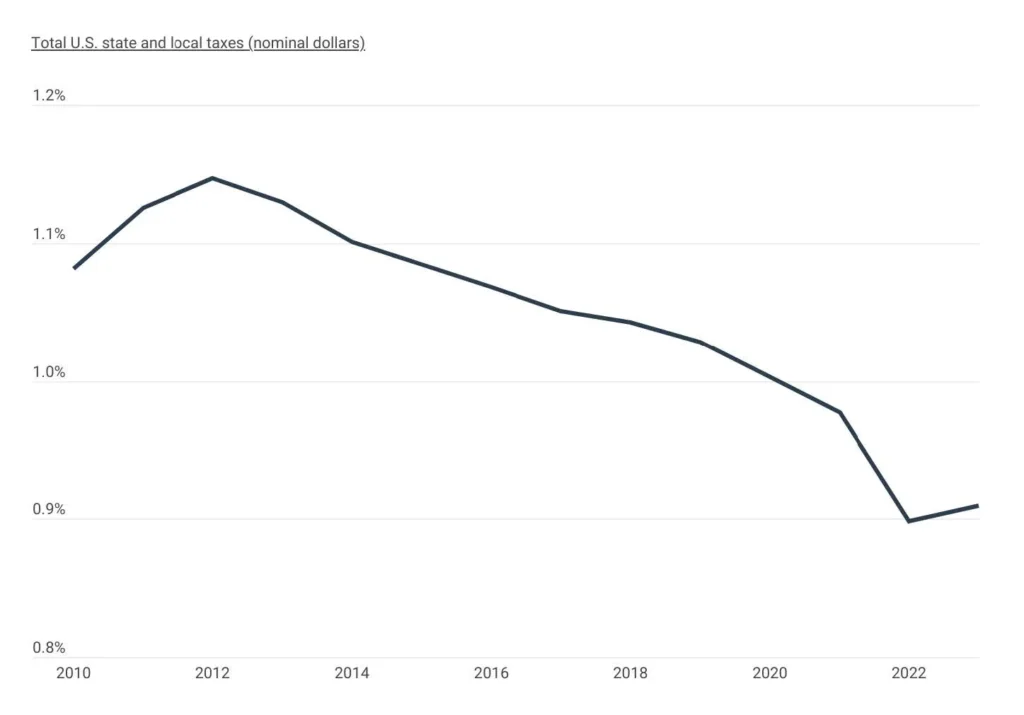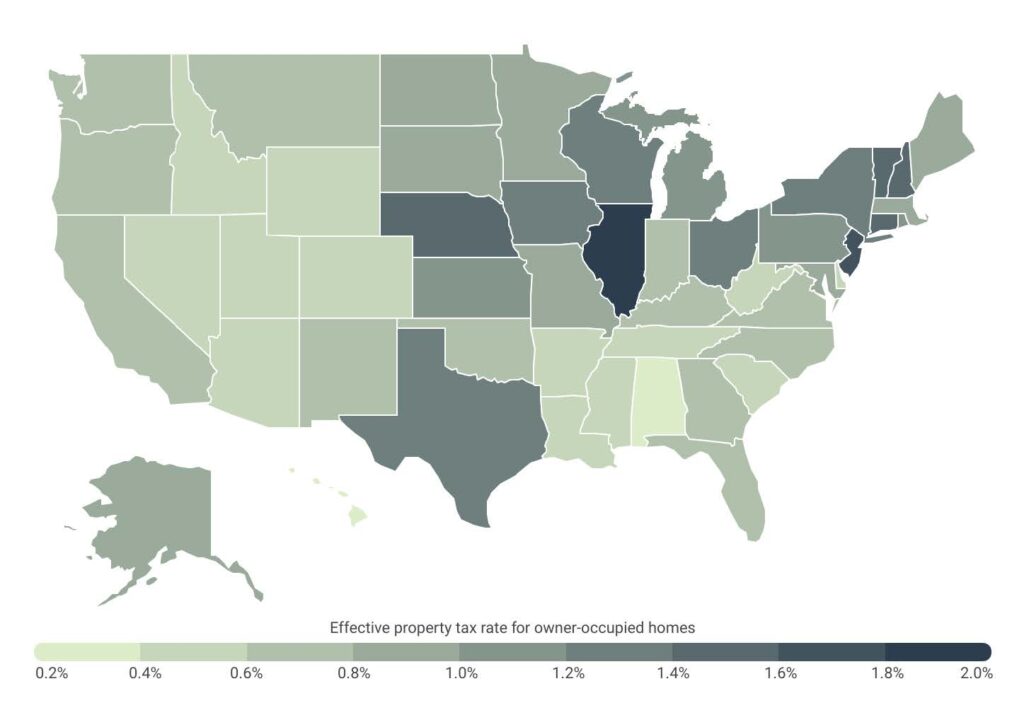Construction Coverage
California Homeowners Pay a Median $5,114 in Property Taxes Each Year


America’s homebuyers have had an extraordinarily difficult few years. A combination of surging demand and scarce inventory has led to fierce competition among buyers, driving home prices to record levels. On top of this, high interest rates have increased borrowing costs, creating another major hurdle for aspiring homeowners.
While existing homeowners have largely benefi ted from high prices in the form of equity gains, theyalso face their own set of challenges. For one, many are effectively “locked in” to their homes,having secured low-interest mortgages before rates began climbing. For these homeowners,relocating often means choosing between downsizing to a less expensive property or absorbingsignifi cantly higher monthly payments on a new loan.
Another factor is property taxes. Typically calculated as a percentage of a home’s assessed value, property taxes have become an increasing burden as property values continue to outpace infl ation. Rising home prices since 2020 have pushed assessments—and in turn, property tax bills—markedlyhigher in many areas. In these markets, homeowners face higher housing costs even if they have afi xed-rate mortgage or own their property outright.
To address this issue, certain states have implemented mechanisms to protect homeowners fromrunaway tax increases. As of 2024, 19 states, including California, Florida, and New York, haveassessment limits that cap how much a property’s assessed value can increase annually. While theselimits help shield homeowners from the full impact of rising home prices, they also deter long timeowners from moving and contribute to signifi cant disparities in property tax burdens across the U.S.
The Importance of Property Taxes
Property taxes account for the largest share of state and local taxes

Source: Construction Coverage analysis of U.S. Census Bureau data | Image Credit: ConstructionCoverage
Higher property taxes can be daunting for homeowners, but they are a boon for state and localgovernments that rely heavily on property tax revenue. Property taxes are a cornerstone of state andlocal government fi nances, providing the largest share of tax revenue to fund essential services suchas education, public safety, and infrastructure. Unlike other tax types, property taxes offer arelatively stable revenue stream, as they are less directly affected by economic fl uctuations.
From 2019 to 2023, property taxes saw the largest total increase in revenue among major taxcategories, rising by $165 billion (27%) from $617 billion to $782 billion. This outpaced the growthin sales tax revenue, which increased by $138 billion, and individual income tax revenue, which grewby $77 billion. Corporate income taxes, while experiencing the largest percentage change, saw asmaller absolute increase of $78 billion.
How Property Tax Rates Have Changed
Property tax revenues have yet to catch up with rapid home price growth

Source: Construction Coverage analysis of U.S. Census Bureau data | Image Credit: ConstructionCoverage
While homeowners might expect recent surges in home values to directly translate to higherproperty tax bills, the reality is more complex. Nationwide, the effective property tax rate—the totaltaxes paid as a percentage of the aggregate value of owner-occupied housing—has steadily declinedover the past decade. After peaking at 1.147% in 2012, the effective rate fell to 0.898% in 2022, its lowest level in over a decade. While preliminary data suggests a slight rebound to 0.909% in 2023,the effective rate remains well below its peak, highlighting the disconnect between rising homevalues and tax assessments.
This trend refl ects the inherent lag in property tax systems, where assessments are typicallyupdated periodically or when homes change ownership. The mismatch between rising propertyvalues and effective tax rates creates disparities in how tax burdens are distributed. Long-termhomeowners often benefi t from lower effective rates, while new buyers purchasing homes at highermarket values may face disproportionately larger tax bills.
Regional Differences in Property Taxes
Illinois and New Jersey have the highest effective property tax rates for owner-occupied homes

Source: Construction Coverage analysis of U.S. Census Bureau data | Image Credit: ConstructionCoverage
Property tax burdens in the United States vary signifi cantly depending on state, county, and city,refl ecting a patchwork of overlapping state and local tax policies. This mosaic of property taxregimes creates wide disparities in effective tax rates across the country, with some regionsexperiencing markedly higher rates than others.
At the state level, the Northeast and Midwest lead with the highest effective property tax rates forowner-occupied homes. Illinois tops the list at 1.825%, followed closely by New Jersey at 1.773%.States like Connecticut (1.485%), Nebraska (1.435%), and Vermont (1.417%) also rank highly,refl ecting a trend where densely populated or older, established states often require more revenue tosupport infrastructure and services. In contrast, the South and Mountain West regions generallyhave the lowest effective rates, with Hawaii (0.318%) and Alabama (0.359%) at the bottom, followedby Arizona (0.442%) and South Carolina (0.471%). A notable exception is Texas, which ranks seventhoverall, with an effective property tax rate of 1.356%.
Drilling down to the county level, disparities are even more pronounced. Salem County, NJ has thehighest effective tax rate in the country at 2.382%, followed by Monroe County, NY, at 2.314%. Othercounties in Illinois and New Jersey dominate the top of the list. Conversely, DeKalb County, AL,boasts the lowest rate at 0.157%, with other counties in Alabama and Hawaii rounding out thebottom tier.
City-level differences also mirror these trends. Trenton, NJ, has the highest effective property taxrate of any U.S. city at 2.653%, while Montgomery, AL, has the lowest at 0.277%. Cities in Illinois,New Jersey, and Connecticut dominate the top ranks, while cities in Alabama, Louisiana, and Hawaiiare among those with the smallest property tax burdens.
Here is a summary of the data for California:
- Effective property tax rate for owner-occupied homes: 0.699%
- Median property taxes paid for owner-occupied homes: $5,114
- Median owner-occupied home value: $725,800
- Median owner-occupied household income: $122,776
For reference, here are the statistics for the entire United States:
- Effective property tax rate for owner-occupied homes: 0.909%
- Median property taxes paid for owner-occupied homes: $3,057
- Median owner-occupied home value: $340,200
- Median owner-occupied household income: $95,915
For more information, a detailed methodology, and complete results, see Where Are U.S. PropertyTaxes Highest and Lowest? A State, County, and City Analysis on Construction Coverage.
Source: Originally published on constructioncoverage.com, part of the BLOX Digital Content Exchange.
